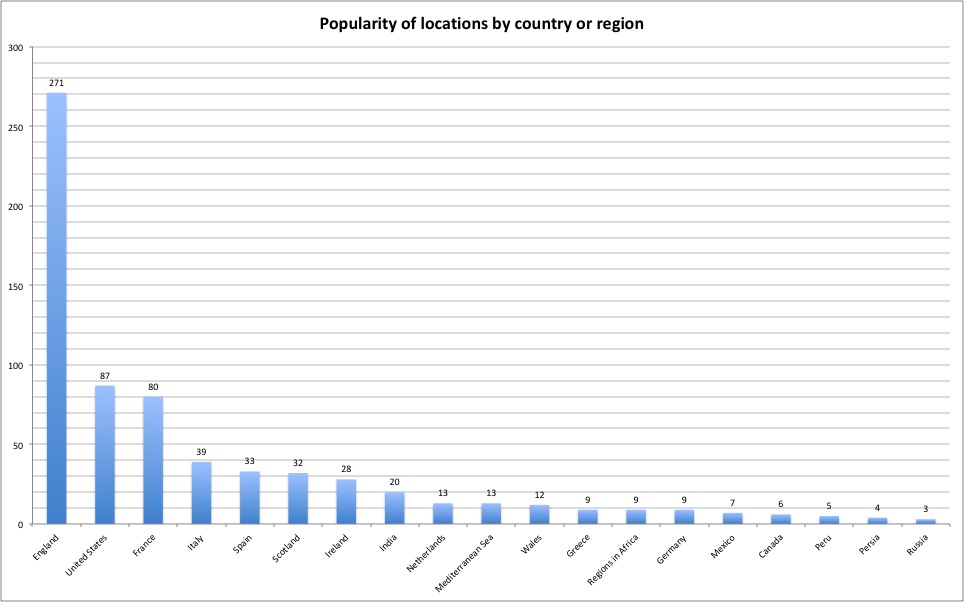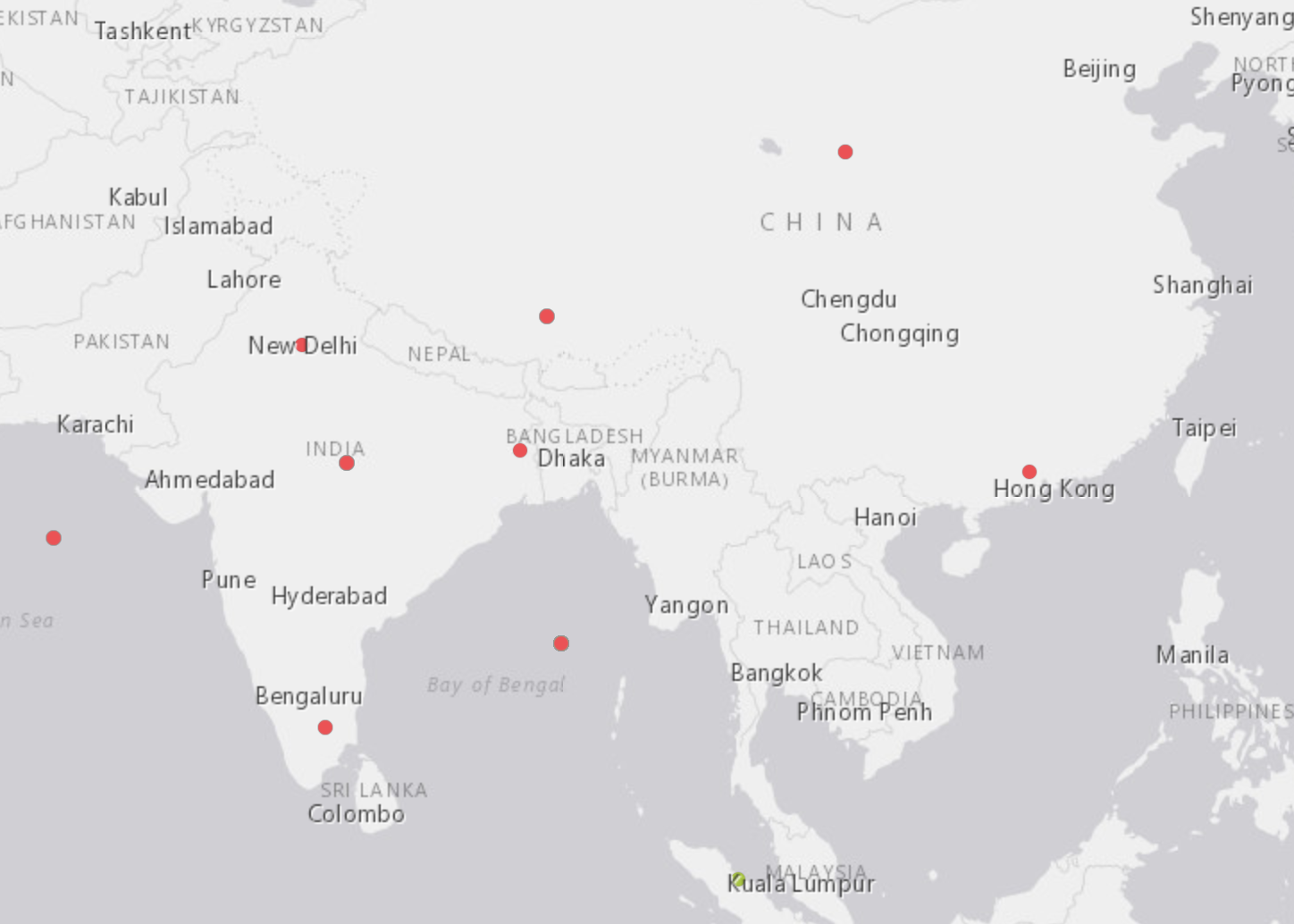Outcomes - Conclusion/Takeaway
The title of a book cannot always accurately give us information about the setting(s) within a novel because the characters may travel to multiple locations within the actual story. This project instead aims to see which locations were important enough for authors to mention in their titles. In the 18th century many readers could only look to the title page in order to get information about which books to buy and read. The author provided a location in the title not only help describe the novel to potential readers, but it most likely indicated that the publisher thought a specific location would help sell the book.
While creating our map, we were especially interested in answering several questions:
- Did British authors prefer to write novels set in their own country or in foreign lands?
- Was there a difference between the genders in this subject?
- Which location was mentioned the most in the title pages?
- What was the most popular narrative form used, and in what time period were those narrative forms most prevalent?
We first looked at the prevalence of certain locations that were mentioned in the title pages of the novels - indicating that the author or publisher was trying to, in part, ‘sell’ the book based on interest in that location.
Because our dataset primarily contains British authors, it is not surprising that Great Britain was the most mentioned country and London was the most mentioned city in the title pages for early English novels. The next most popular city was Paris, but that does not mean that France was the next popular country. After Britain, locations in the United States (or the American colonies at the time) was the next most popular region to feature in book titles. It is also interesting to note that the most frequently mentioned place outside of Europe, other than the United States, is India, with 20 locations referring to that country or a place within it.

It is possible that Paris was frequently mentioned due to its status as a fashionable hub of European culture, so many English readers were interested in reading books related to Paris. On the other hand, the young nation of the United States was still a source of wonder and curiosity to many English readers, especially novels that involved Native Americans.

We found that many books, especially those published post-1750, mentioned the United States. Pennsylvania was by far the most mentioned region of the United States.

Given the time in which the authors are writing (in the long eighteenth century), it was not surprising that most of the authors from our dataset were male.

However, we wanted to know which gender was more likely to set their stories in foreign (or even imaginary!) lands. Two of our researchers had opposing views on this matter. Ina hypothesized that female authors would be more likely to write novels set in Great Britain, while Cassidy hypothesized that female authors would be more likely to write novels set in foreign countries. After looking at the map, we found that female authors tended to set their stories in Great Britain.

Interestingly enough, even though a majority of female authors set their novels in England, few of their titles mention places found in London. Instead they tended to feature smaller British cities and towns. According to our data it was mostly male authors and a few authors of indeterminate gender featured London-based locations in their title pages, with only three female authors as the exception. In the map below, red dots reference locations in novels written by male authors, and blue dots represent books where the author is not known or was not added to our dataset.

Many female-authored novels do frequently feature trips to London, such as Francis Burney’s Evalina and many of Jane Austen’s novels in the early 19th century, and yet their novels don’t advertise London explicitly. It possible that this suggests that women were trying to “sell” novels about more innocent, virtuous characters, which were believed to originate from the countryside.
If we look at all the cities mentioned in the title pages of only Female-authored novels, York and Philadelphia are more frequent. Numerous cities that we charted as popular in the title pages of novels, including Westminster and Bath, are not mentioned at all in the novels that have been categorized as female-authored.

Our sample shows that more male authors were writing novels that explicitly advertised a location in Asia on their title page.

The most popular narrative form is third-person while the second most popular is first-person. There was a rise in third-person narrative from 1750 to 1850, while the first-person and epistolary form was primarily used from the late 17th century to the early 18th century.
We were also able to observe some (loose) patterns around the novels’ publication dates. For example, we found that most of the novels that mention a location in Ireland in their title page tend to be published between 1750-1800 (light green) and 1800-1850 (dark green). This is especially notable given that a smaller section of our sample was published post-1800.

Unsurprisingly, we also found that many of the U.S. locations were mentioned in novels published between 1750-1800 (light green) and 1800-1850 (dark green).

Questions for the Future
Some other questions we have going forward are:
- How would we go about including all location adjectives, such as “French” or “Chinese”? Sometimes, in title pages, the publishers include “Translated from French” or “Originally in Chinese,” how might publishers use location adjective to sell their books?
- Were certain locations more popular in certain genres (for example: which locations are more prevalent in gothic novels or romances).
- If title pages have specific words that categorize the novels like “History of” or “Gothic tale” or “Romance of,” what trend could be seen among the location words in the title page?
- Were novels containing American locations in their title pages published more frequently in American cities or British cities? Was the United States advertised as a wild frontier to entertain British readers, or simply as a familiar place for American readers?
